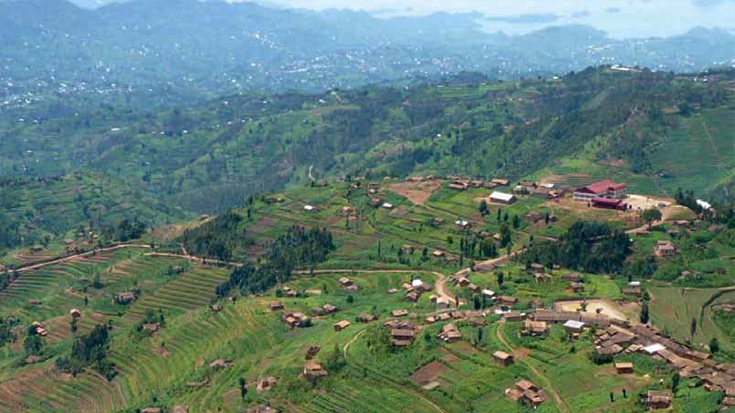The report’s recommendation to better manage risks in the agricultural sector comes on the heels of a recent growth recovery from 4.7% in 2013 to 7.1% in 2014, led mostly by higher government spending. Inflation declined from 4.2% in 2013 to 1.8% in 2014 due to lower growth in import prices. Rwanda, a net oil importer, could also benefit from falling oil prices which could contribute to lower inflation but also to a more stable exchange rate, an improved balance of payments, and smaller electricity subsidies.
Managing risks in the agricultural sector
The agricultural sector has become much more productive since 2000, the report notes.Yields, or production per hectare, increased 225% for maize, 129% for potatoes, and 90% for cassava between 2008 and 2011. This, in turn, accounted for 35% of Rwanda’s reduction in poverty over the past. Despite these achievements, almost half the country’s population still lives below the poverty line.
According to the report, better management of weather-related and market risks that threaten the agricultural sector will help the country achieve further growth in the agricultural sector. “Risk mitigation measures such as soil and water conservation measures or changes in cropping patterns, the report notes, are often win-won practices, in that they reduce the impacts of agricultural risks on farmers while at the same time improving productivity.”
The report also recommends the adoption of risk management tools such as risk transfer measures (including insurance, reinsurance, and financial hedging tools) and risk coping measures (social protection programs or livelihood recovery programs). “Risks to the agricultural sector caused production losses worth US$1.2 billion between 1995 and 2012, about 2.2% of Rwanda’s total annual agricultural production,” said Toru Nishiuchi, a World Bank economist and the Task Team Leader for the Rwanda Economic Update.
To help the country reach its goal of transforming Rwandan agriculture from a subsistence sector to a knowledge-based and to reduce poverty to 20% by 2020, the report outlines the following recommendations:
- Water management measures can yield significant productivity gains and help mitigate the effects of climate change
- Some weather-risk management measures in the livestock subsector, such as improvements to rural water infrastructure, would also benefit the crop subsector
- Improved pest and disease management in crop production is needed, in particular as it relates to potential future risks as a result of land consolidation and increased mono-cropping
- Livestock disease management infrastructure is needed to mitigate and manage disease outbreaks
- Sanitary institutions and practices in the livestock subsection need to be strengthened throughout the supply chain, by both public and private sectors
- Price management mechanisms are needed for actors in the export crop supply chain

